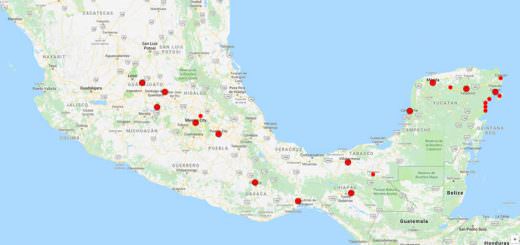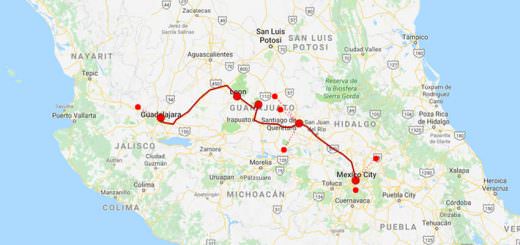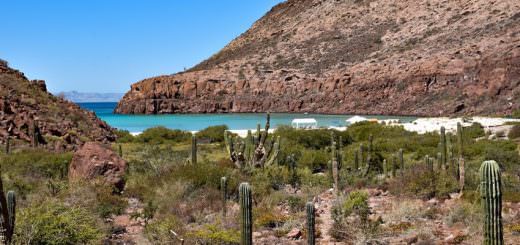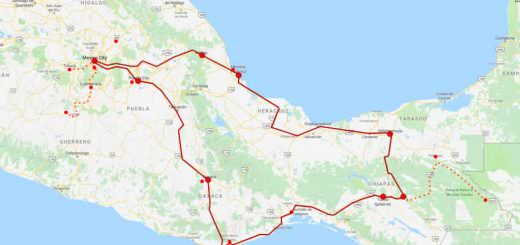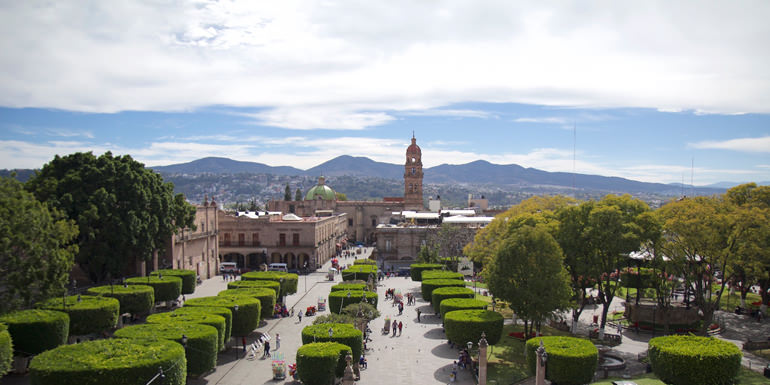
Morelia
Morelia is a city and municipality in the north-central part of the state of Michoacan in central Mexico. The city is the capital and the largest city of the state, Morelia is also the municipal seat of the Morelia Municipality.
The city is the political, economic, and cultural center of Michoacán.
Tourism accounts for the main economic activity in this region. Morelia contains many ecological areas, such as the Rio Bodoquero, which attracts the majority of tourists and local residents.
In 1991, the city was declared a UNESCO World Heritage Site for its well-preserved colonial buildings and layout of the historic center.
Geo & Envroiment
Morelia is situated in the central part of Mexico, in the region known as the Bajío. The city’s landscape is defined by its location in a valley surrounded by the Sierra Madre Occidental and Sierra Madre Oriental mountain ranges.
Much of the municipality is in the Guayangareo Valley between two rivers: the El Grande and the El Chiquito. The Guayangareo River runs through the city, adding to its picturesque charm.
The region is known for its lush greenery and diverse flora and fauna.
Guayangareo means “large hill with a flat side”. The municipality’s territory is rugged and dominated by peaks such as Punhuato, El Zapote, and the Otzumatlán mountain range, with the highest peak being Quinceo with an altitude of 2,787 m.
The municipality belongs to the Lerma-Santiago River hydraulic region, with the main rivers being the El Grande and the El Chiquito. There are a number of streams including the Zarza and Pitaya.
The most important dam here is Cointzio, with other smaller ones being Umécuaro, Laja Caliente, and La Mintzita.
Vegetation outside the city varies based on altitude and the type of soil. Mountainous areas are mostly covered in conifers while lower and drier areas have trees such as mesquite. To the south of the city is the Lázaro Cárdenas Forest, which is an ecological reserve.
Animal life mostly consists of small mammals, with coyotes being the largest, birds of prey, and some reptiles.
The best time to visit Morelia
Morelia lies at an altitude of about 1,920 m above sea level. The city has a subtropical highland climate with warm to hot days and cool nights all year round due to the high altitude.
- January: average monthly 16°C
- February: average monthly 17°C
- March: average monthly 19°C
- April average monthly 21°C
- May: average monthly 22°C
- June: average monthly 21°C
- July: average monthly 20°C
- August: average monthly 20°C
- September: average monthly 20°C
- October: average monthly 19°C
- November: average monthly 17°C
- December: average monthly 16°C
Most precipitation falls during the rainy season: from June to September.
The best time to visit Morelia is during the dry season, which falls between November and April. The weather is pleasant, and you can explore the city’s historic sites and natural beauty comfortably during this time.
Origin of the name
Morelia was originally founded in 1541 as Nueva Ciudad de Mechuacan (“New City of Michoacán”).
Later, in the same year, it was renamed into Guayangareo.
In 1545, Guayangareo gained city status with the name of Valladolid.
In 1828, the newly created state of Michoacán changed the name of the city from Valladolid to Morelia, in honor of the national hero José María Morelos y Pavón, which is the official name the city retains today.
The name change also aimed to distance the city from its colonial past.
History & Timeline
Human settlements in the Guayangareo Valley in which Morelia is located have been dated back as far as the 7th century. Artifacts found here have shown Teotihuacán culture’s influence on early cultures in this area.
In the 12th century, the Purépecha arrived in the valley. They dominated it politically for the rest of the pre-Hispanic period but did not build any major settlements here.
Between the 12th and the 15th centuries, Matlatzincas moved into the area with permission of the Purépechas, who were based around nearby Pátzcuaro Lake. The main Matlatzinca settlement was where Júarez Plaza in the city is today.
The Spanish pushed into the Guayangareo Valley between 1525 and 1526, headed by Gonzalo Gómez. In the 1530s, the area was evangelized by Franciscans such as Juan de San Miguel and Antonio de Lisboa.
What later became the city of Morelia was founded by Viceroy Antonio de Mendoza and a number of encomenderos in 1541, who first named it Nueva Ciudad de Mechuacan (“New City of Michoacán”).
The newly founded settlement grew quickly, prompting Vasco de Quiroga to go to Spain and procure for rival settlement Pátzcuaro the title of city and a seal, to prevent the “new city” from becoming the capital of Michoacán.
The action also required that the new settlement change its name to Guayangareo.
In 1545, Guayangareo gained city status with the name of Valladolid, after the hometown of Antonio de Mendoza. This was part of a power struggle between Antonio de Mendoza and Vasco de Quiroga over the province of Michoacán.
During Quiroga’s lifetime, he managed to keep political and ecclesiastical power in Pátzcuaro despite the viceroy’s and encomenderos’ objections. However, Quiroga died in 1565.
By 1580, both political and religious authority (Episcopal see) had been transferred to the city of Valladolid, moving the College of San Nicolás, which Vasco founded, and laying the groundwork for establishing a new cathedral for the province.
The 17th century saw growth for Valladolid, with the construction of the cathedral and aqueduct. The cathedral was begun in 1640 (finished in 1744) and the aqueduct in 1657.
During the 17th century, many of the city’s large churches and monasteries were established, such as the monasteries of San Francisco, San Agustin, El Carmen, and La Merced as well as the convents of Las Rosas, Las Monjas, and Capuchinas. Churches include La Compañía, San Juan and La Cruz.
But the most important structure built during this time period was the Cathedral. The location of this cathedral defined the composition and development of the city from then on.
At the end of the colonial period, Valladolid was a small city with about 20,000 inhabitants. It was also an educational center with four important schools such as the College of San Nicolás.
These schools would turn out scholars such as Miguel Hidalgo y Costilla and José María Morelos y Pavón, who were sympathetic to the new republican ideas coming out of post-revolution France and the United States.
Demonstrations against Spanish rule had been occurring in the town in 1809, culminating in the Conspiracy of 1809. This plot was discovered, and the main conspirators were arrested and sent to other parts of New Spain, which helped to spread republican ideas.
One year later, after forming his army in Guanajuato state, Miguel Hidalgo y Costilla arrived and took over the city, proclaiming the end of slavery in Mexico. The city was taken back by royalist forces soon after.
Morelos came here to try and dislodge the royalists but was defeated by Agustín de Iturbide. Another prominent figure in the war, Mariano Matamoros was shot by a firing squad on the city’s main square in 1814.
The city remained in the royalist’s hands until 1821, when Iturbide, who had switched sides, and Vicente Guerrero entered the city with the Trigarante Army.
In 1828, the newly created state of Michoacán changed the name of the city from Valladolid to Morelia, in honor of José María Morelos y Pavón, which is the official name it retains today.
Although its Purépecha name remains Uaianarhio and has had nicknames such as City of Pink (Cantera) Stone, the City of Open Doors, The Rose of the Winds, The Garden of New Spain, and religiously Morelia of the Sacred Heart of Jesus.
The city became a municipality in 1831.
The later 19th century was marked by struggles between liberal and conservative forces in Mexico.
During the Revolution of Ayutla, the city was taken by rebel forces under Epitacio Huerta and General García Pueblita but was taken back in 1855 by forces under Antonio López de Santa Anna. Rebels attacked Santa Anna’s troops again a year later.
French troops imposing imperial rule entered the city in 1863, with the republican forces moving the capital of Michoacán to Uruapan while conservative families in Morelia pledged support for emperor Maximilian I, who then visited the city.
In 1867, the city was taken by republican general Nicolás de Régules, and the capital of Michoacán returned to Morelia.
In 1869, during a rebellion against Benito Juárez’s government, General Epitacio Huerta attacked government positions in the city but was beaten back by forces under Mariano Escobedo.
The first factories were opened in the city between 1868 and 1870, along with the first telegraph line. The railroad followed in 1883, as well as street cars.
In 1910, celebrations were held for the centennial of Independence but tensions were high in the city due to the shortage of grain and the continuation of President Porfirio Diaz in power.
One year later, revolutionaries loyal to Francisco I. Madero was welcomed into the city.
In 1914, the capital was moved from Morelia to the city of Tacámbaro. The city was then taken by forces under General Sánchez in the same year, and by forces loyal to Francisco Villa in 1915.
In 1920, the Palace of the State Government was briefly taken over by farm workers and others from all over the state. Isaac Arriaga is assassinated here in 1921.
The city was attacked again by rebels calling themselves “Delahuertistas” in 1924. The fight mostly occurs in the main plaza with the city defended by General Lopez, Garcia, and Avila Camacho.
During the 1960s the street vendors were removed from the historic center of the city, and palm trees that lined Avenida Madero, the main east-west road, were cut down.
In 1966, there was a student revolt at the state university which was put down by the army.
The 1970s and 1980s are marked by construction including the Periferico bypass ring around the city.
During the 1980s, damage due to geographic faults, exacerbated by falling water tables from groundwater pumping was noticed. This problem is similar to problems faced by other cities on the Trans-Mexican Volcanic Belt such as Querétaro and Mexico City.
In 1991, the city was declared a UNESCO World Heritage Site due to its well-preserved colonial architecture.
In 2001, street vendors were moved again from the historic center to make the area more tourist-friendly. Traffic was rerouted from here as well with the construction of new bypasses.
In 2006 and 2007, many of the plazas and gardens in the historic center were remodeled.
In 2009, the Morelia metropolitan area was tentatively established as consisting of the municipalities of Zinapécuaro, Álvaro Obregón, Charo, Tarímbaro, and Morelia.
This initial determination was made by the Secretary of Urbanism and Environment, with further refinements to be made as the municipal presidents of these entities meet to discuss limits, strategies, and further actions.
One of these actions has been to establish a formal commission to administer the area.
Tourist Attractions & Sightseeing
The Mexican federal government lists 1,113 buildings built from the 16th to the 20th centuries as having historical value. The buildings encompass the various architectural styles that have been fashionable in Mexico.
Almost all these buildings are built of pink Cantera stone, which gives the city a unified appearance.
In 1956, the city enacted regulations to preserve the historic center’s colonial buildings.
In 1990, was issued a decree making the historic center of Morelia a national historic monument. In 1991, the same area was declared a World Heritage Site by UNESCO, which covers 200 of the area’s historic buildings.
Morelia, with its rich history and stunning architecture, offers a lot of points of interest. Here is a list of some of the prominent historic buildings, churches, cathedrals, parks, plazas, and other attractions in the city:
Historic Buildings:
- Palacio Clavijero – A beautiful colonial building now used for cultural and artistic events.
- Palacio de Gobierno – The State Government Palace is known for its exquisite murals.
- Casa Natal de Morelos – The birthplace of José María Morelos, a hero of the Mexican War of Independence.
- Casa de la Cultura – A cultural center housed in a historic building with various art exhibitions.
- Casa de las Artesanías – A center for traditional Michoacán crafts.
- Conservatorio de las Rosas – A historic music school with beautiful architecture.
- Colegio Seminario (today the State Government Palace)
- La Alhóndiga (today part of the Palace of Justice)
Churches and Cathedrals:
- Cathedral of Morelia – A magnificent Baroque cathedral in the city center.
- San Nicolás Obispo Church – An iconic church located near the Cathedral.
- Santa Rosa de Lima Church – A beautiful example of colonial architecture.
- San Francisco Church and Convent – A historic church with a lovely courtyard.
- Santuario de Guadalupe – A sanctuary with a rich history and stunning architecture.
Parks and Plazas:
- Plaza de Armas (Plaza de Los Mártires) – The main square of Morelia, surrounded by historic buildings.
- Bosque Cuauhtémoc – A large park with walking paths, fountains, and green spaces.
- Jardín de las Rosas – A charming garden with a variety of roses and sculptures.
- Plaza Villalongín – A picturesque plaza with a prominent statue of José María Teclo Morelos y Pavón.
- Plaza de San Agustín – A smaller, quaint plaza known for its tranquil atmosphere.
Museums:
- Museo Regional Michoacano – A museum showcasing the cultural history of Michoacán.
- Museo Casa de Morelos – A museum dedicated to the life and work of José María Morelos.
Other Attractions:
- Aqueduct of Morelia – A stunning aqueduct that stretches across the city.
- El Callejón del Romance – A charming alley known for its romantic ambiance.
This list highlights some of the key attractions in Morelia, but the city has even more to offer in terms of culture, history, and natural beauty. Exploring its streets and squares will reveal many more hidden gems and historical sites.
One day trips from Morelia
Morelia offers several great options for day trips and excursions to nearby tourist attractions:
Pátzcuaro: This picturesque town is famous for its stunning Lake Pátzcuaro, as well as its rich indigenous culture and crafts. You can explore the town’s historic center, visit Janitzio Island, and experience the Day of the Dead celebrations in October.
Tzintzuntzan and Tarascan ruins: Just a short drive from Pátzcuaro, Tzintzuntzan is home to ancient Tarascan ruins. The Yacatas pyramids are a must-see, providing insight into the pre-Hispanic history of the region.
Santa Clara del Cobre: This town is known for its skilled copper artisans. You can watch craftsmen at work, shop for unique copperware, and learn about the traditional techniques used in this art form.
Paricutin Volcano: If you’re interested in natural wonders, consider a visit to Paricutin, a dormant volcano. You can hike to its crater and enjoy the beautiful surrounding landscapes.
Quiroga: Quiroga is a small town, not far away from Lake Patzcuaro. Quiroga is known for its bustling market, where you can sample regional cuisine, buy handicrafts, and experience the local culture.
Cuitzeo: This town is home to the Cuitzeo Lake, a tranquil spot for birdwatching and enjoying nature. You can also explore the town’s historic center and visit the Ex-Convent of Santa María Magdalena.
Uruapan: Uruapan is famous for its lush national park, Parque Nacional Barranca del Cupatitzio, where you can take a refreshing stroll along the river and admire waterfalls and lush vegetation.
Capula: Another small town in Michoacan. Capula is renowned for its pottery, especially its distinctive Day of the Dead ceramic figurines. You can visit local workshops and purchase unique souvenirs.
Zirahuen: Zirahuen is also a small town situated on the shore of the Zirahuen Lake. This lake is surrounded by pine forests and offers opportunities for boating, hiking, and relaxation in a serene natural setting.
Tingambato Archaeological Site: Tingambato is situated approximately 110 km northwest of Morelia. The ruins of Tingambato feature impressive pyramids and structures from the ancient Purepecha civilization.
These are just a few of the many options for day trips from Morelia. Depending on your interests, you can choose one or more of these destinations to explore and make the most of your visit to this culturally rich region of Mexico.
Traditions & Festivals
The Festival Internacional de Música de Morelia is an annual event begun in 1988 by Bernal Jiménez, who dreamed of making Morelia the “Salzburg of America.” The festival consists of more than forty concerts with over 500 artists participating.
It has become the largest music festival in Morelia, with private and government sponsors, esp. CONACULTA. Concerts include chamber orchestras, choirs, ensembles, trios, and soloists such as pianist Joanna MacGregor and the Britten Symphony.
Each year, a different country is the “special guest,” which in 2009 was the United Kingdom.
That year, some of the participants included the London Symphony Orchestra, the Brodsky Quartet, the La Britten Symphony Orchestra, the Coro Nova Scholla Gregoriana Di Verona of Italy, and violinist Tanya Anisimova from Russia.
Participants from Mexico included the National Symphonic Orchestra, the Orquesta Sinfónica de Minería, and flutist Horacio Franco.
The Festival Internacional de Cine de Morelia was begun in 2003 and is mostly dedicated to Mexican cinema, showcasing up-and-coming directors and productions. The majority of activities take place in the Cinépolis Morelia Centro but also include other theaters, auditoriums, and public plazas.
Morelia is the site of the annual Zapata Vive Morelia Festival, which celebrates the life of Emiliano Zapata with cultural and political activities. The purpose of the event is to promote exhibitions by artistic, cultural, and social organizations from the state of Michoacán and other parts of the country.
Events are spread out over several days and include ones such as concerts, round tables, and information sessions. The event encourages those organizations that work with the lower social classes and are politically left to participate.
The Festival de Escala is an annual event dedicated to promoting rock climbing in the municipality at places such as El Paredón de la Noria, just south of the city proper.
A popular festival that features a 3-day Salsa competition in the heart of Morelia is called “SalsaMich”. Typically held in March, the festival brings Salsa dancers from all across the country to Morelia to compete for prizes.
How to get there & Transportation
Morelia, Mexico, is well-connected by bus to various cities and towns in the region.
Intercity buses
Here is a list of some of the cities and towns from which you can travel to Morelia by bus.
- Mexico City – approx: 3-4 hours
- Guadalajara – approx: 4-5 hours
- Querétaro – approx: 2-3 hours
- Pátzcuaro – approx: 2-3 hours
- Uruapan – approx: 2-3 hours
- Zamora – approx: 2-3 hours
- Toluca – approx: 4-5 hours
- Puebla – approx: 5-6 hours
- León – approx: 4-5 hours
- Acapulco – approx: 7-8 hours
The availability of bus routes may change over time, so confirm your options before planning your trip.
General Francisco Mujica International Airport
Morelia International Airport handles both domestic and international flights:
Domestic Destinations:
- Mexico City (Benito Juárez International Airport)
- Guadalajara (Guadalajara International Airport)
- Monterrey (Monterrey International Airport)
- Tijuana (Tijuana International Airport)
- Cancún (Cancún International Airport)
International Destinations:
- Chicago, USA (Chicago O’Hare International Airport)
- Dallas/Fort Worth, USA (Dallas/Fort Worth International Airport)
- Houston, USA (George Bush Intercontinental Airport)
- Los Angeles, USA (Los Angeles International Airport)
- Oakland, USA (Oakland International Airport)
- Phoenix, USA (Phoenix Sky Harbor International Airport)
Please verify the current destinations and flight schedules with the airport or airlines, as routes can change over time.
Getting around in Morelia
Morelia’s historic center is pedestrian-friendly, making it easy to explore on foot. Many of the city’s main attractions are within walking distance of each other, so strolling around the historic center is a great way to see the sights.
In the historic center of Morelia, you may find tourist trolleys or tram-like vehicles that offer guided tours of the city’s landmarks. This is an excellent way to learn more about Morelia’s history and architecture.
Getting around Morelia is relatively easy, and you have several options for transportation within the city:
- Local Buses (Camiones)
- Collectivos
- Taxis
Some areas of Morelia have bike lanes, and you can rent bicycles for short trips within the city.
If you prefer the flexibility of having your own vehicle, you can rent a car from rental agencies in Morelia. Keep in mind that traffic and parking can be challenging in some parts of the city, particularly in the historic center.
Let us know if this article was useful for you


















